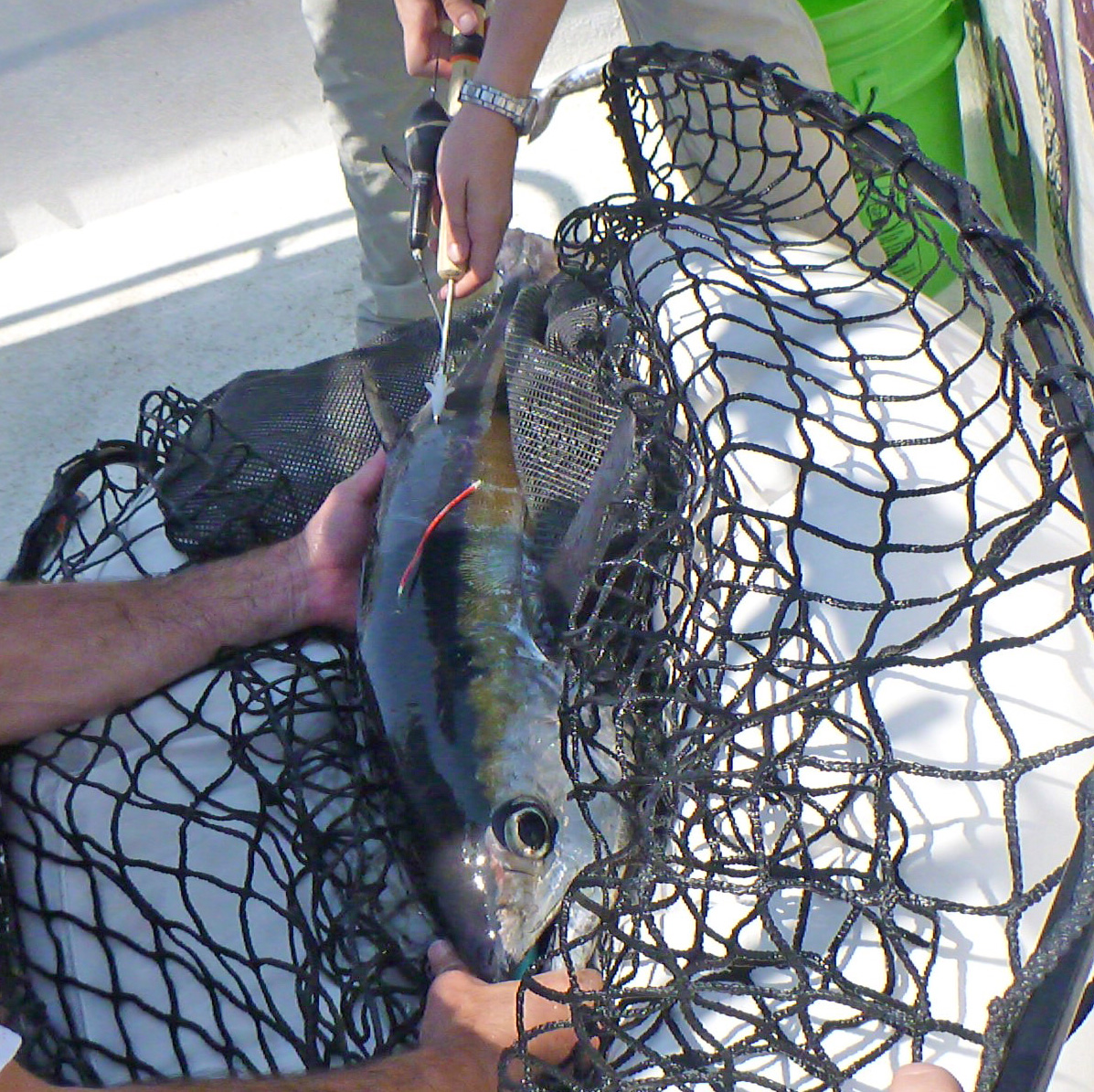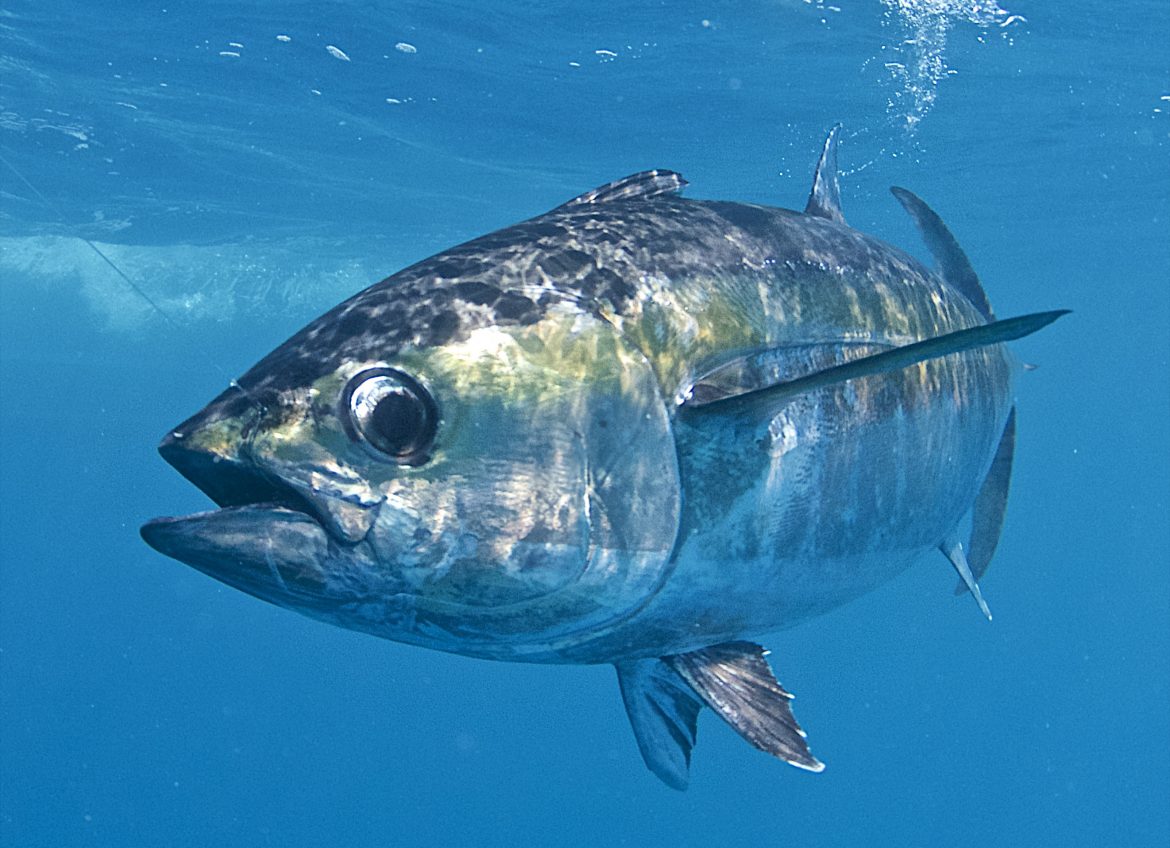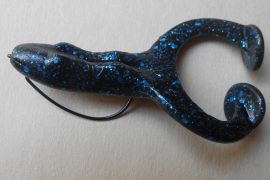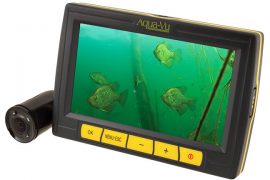Florida scientists unlock the blackfin tuna code.

A flash of gold in the depths is often the angler’s first sight. Dark fins indicate a blackfin tuna, not the similar—and potentially much larger—yellowfin. The species overlap in some waters off Florida.
Over the years, Florida Sportsman has covered the ins and outs of the blackfin tuna fishery around the Florida coastline: Places these fish are historically abundant, such as the famous Humps in the Florida Keys; the shrimp fleet in the Gulf of Mexico; bluewater ledges off Northeast Florida. We’ve researched baits that are productive—from live sardines to ballyhoo, small trolling plugs to streamer flies. We’ve covered the advent of fluorocarbon leader material, its low refractive index apparently conducive to fooling the sharp-eyed blackfins.

And yet, like many of the anglers and captains we’ve spoken with, we’ve always wondered about the basic biology of our feisty little blackfin. What conditions do they favor? How fast do they grow? When do they spawn? What means might be used to study them, to discern their migratory or foraging cycles?
It’s the brutally ironic thing about fisheries science. The fish that we know the most of, tend to be those which have been most heavily exploited for the commercial market. It’s only when a fish, such as the red drum, bluefin tuna or swordfish, reaches a crisis point that effort and funding align to document critical details of life history, range and reproduction. In the case of blackfin tuna, it has taken basic curiosity and academic initiative to spur this kind of attention.
There’s never been much of a market in the southeastern U.S. for blackfin tuna. Not like the giant bluefin, whose Western Atlantic populations crashed after the sushi market exploded in the 1970s. And yet, the blackfin, a smaller member of the tuna clan, has long been a tremendously popular catch for recreational anglers. They are hard fighters for their size, and their deep red flesh is delicious when seared over a hot grill. At times they seem to be wary feeders, goading us to do what we as anglers love to do: Figure out better ways to catch them.
Quietly, in the last few years, scientists have been doing some figuring of their own.
Right here in Florida, the fisheries lab at Nova Southeastern University (NSU), in Fort Lauderdale, has emerged as a fountain of useful research into blackfin tuna. Under the direction of Assistant Professor Dr. David Kerstetter, three research papers have contributed much to the scientific and common understanding of the species’ habitat, growth and reproduction.
Habitat: Ups and Downs
For starters, a tagging study using sophisticated instruments has yielded interesting results as to blackfin tuna habitat utilization. Nova graduate student Jenny Fenton is listed as the principal author of Habitat utilization of blackfin tuna in the north-central Gulf of Mexico, published in October 2014.
In April 2012, the NSU researchers on Fenton’s team fished off the coast of Louisiana. They captured 10 blackfin tunas using hook-and-line gear, 7/0 circle hooks and chunks of little tunny. The blackfins ranged from 27 to 34 inches—fairly husky, for the species. A 4 ½-inch pop-up satellite archival tag (PSAT) was planted in each fish before release. Every 90 seconds, the X-Tag model PSAT tag records temperature, pressure (converted into depth) and light levels. After a preprogrammed number of days at sea (in this study, 10, 19 or 28 days), each tag released and floated to the surface, transmitting its data archive via satellite.
The researchers found that the blackfins spent 90 percent of their time within the first 187 feet of the surface, but dived periodically to depths as great as 650 feet or more. Also, the fish favored water temps between 71 and 80 degrees F—which certainly dovetails with what most Florida anglers observe.
Most interestingly, the tagging results verified what fishermen have long noticed: blackfins stay deeper during daytime, and ascended to shallower depths at night. The researchers didn’t suggest a motive for the behavior, but a fisherman looking at bits of squid in a blackfin’s belly might infer the diving has to do with foraging.
Blackfins may also exhibit site-fidelity, another way of saying, they find a place they like, they stick around. Among the 10 tags planted in the Habitat utilization project, six popped off within 20 miles of the original point of capture. Fishermen who’ve noticed that schools will mob up on a particular wreck or deepwater ledge wouldn’t be at all surprised to learn that a blackfin might stay in the area for 28 days or longer, but it’s interesting to see confirmation through technology.

On the subject of site fidelity, Kerstetter, when I interviewed him for this article, expressed curiosity about the blackfin’s range. Unlike the trans-Atlantic bluefin, yellowfin and bigeye, blackfins are strictly limited to the Western Atlantic. “Blackfins…





